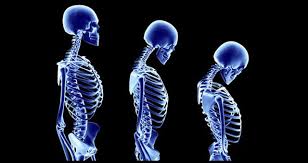We get told often of the importance of good posture for good health. Over time, poor postural habits can create many physical changes to our body as well as changes to our stability.
To start with let’s consider what effect your posture may be having on your body. It’s often difficult to look at our own posture and make a judgement of if it is good or could use improvement.
One of the best ways to assess your posture is to stand up against a wall. Stand with your head, shoulders, upper back, buttocks and heels against a wall. Make sure that you are not tilting your head back to reach the wall. Your nose should remain in the middle of you face rather than moving up. Were you able to reach the wall?
One of the reasons that many people can’t reach their head to the wall is because over time poor posture has changed their physical structure. When the tissues in our body are held in either a long or short position consistently, as is the case with poor postures, over times they adapt to these positions. The muscles that are held in a short position, lose their ability to stretch as they were designed to do and the long ones stay longer and often become a bit weaker.
Both long and short muscles also change the way they function and work in different positions to what they were designed. Our joints rely on what is often called “muscle balance”. This simply means that the muscles on either side of the joint need to work together at the same time to keep the joint stable.
Prolonged poor posture often results in one muscle being short and the muscle on the other side of the joint being long. As a result, rather than both muscles contracting equally at the same time to stabilise a joint, they work differently and the support for the joint is compromised.
The good news is that it is possible to reverse some of these changes. In the same way that holding a bad position for too long will change your structure, holding a good position for a long time will also change your structure but this time in a positive way. One of the simplest ways to do this is spend 5-10 minutes a day lying down on a completely flat surface. If you are unable to get up and down from the ground easily you can use your bed although it is best done using a firm surface. While you are in this position you want to try and relax. Some deep breathing often helps the process.

